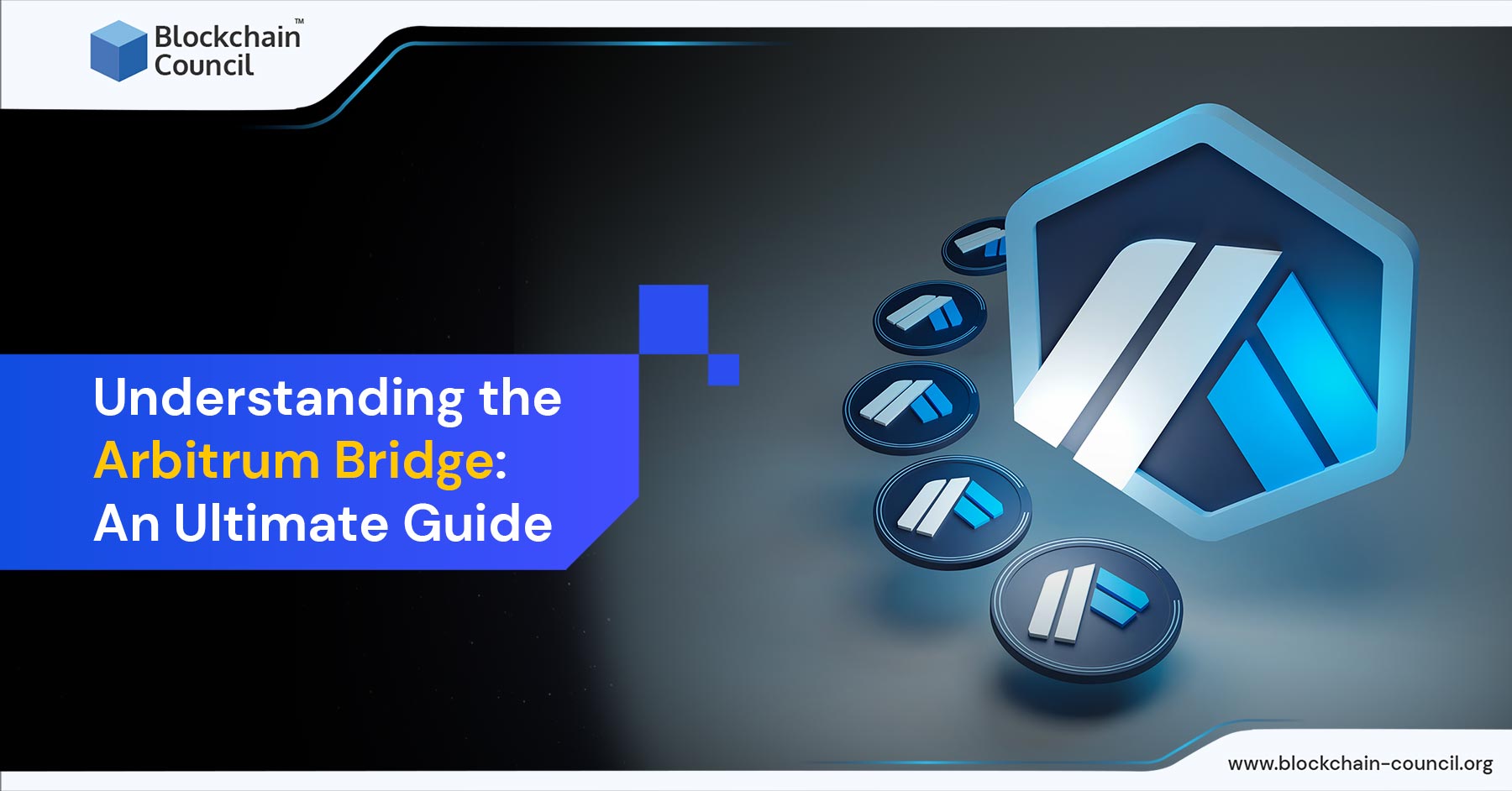
- Blockchain Council
- November 11, 2022
Arbitrum is an emerging roll-up technology. Transmitting messages between Arbitrum’s second layer chain and Ethereum’s main chain smart contracts allows exponential scaling for Ethereum smart contracts. Significantly increasing speed and efficiency, this layer 2 scaling solution conducts large volumes of transaction processing, with the outcomes recorded on the main chain. The primary way to send ERC-20 and ETH tokens from Ethereum (Layer 1) to Arbitrum(Layer 2) is through the Arbitrum Bridge. However, a wallet is required to start the bridging procedure on Arbitrum Bridge. This blog will explain Arbitrum Bridge and its relative characteristics.
Explore more of Arbitrum. Enroll in our advanced Ethereum developer and get the accredited certification.
Core Concept of Arbitrum
Most decentralized applications(dApps) run on Ethereum, a global open-source blockchain. The chain’s underlying purpose is to establish a global interlink that anybody can use to build decentralized programs, with all states and data distributed and available to the general public. Ethereum allows smart contracts in which programmers can write code to create a digital currency. Decentralized finance apps, Non-fungible tokens, decentralized exchanges, lending protocols, and many more are examples of some constructed on Ethereum.
Get to know more about Arbitrum and other bridging solutions. Visit Blockchain Council and enroll in our advanced Ethereum certification today!
Rapid expansion and increasing user base of Ethereum have resulted in network congestion and skyrocketing transaction prices. This scalability problem is because of the constraints of the network architecture. To sustain the Ethereum network (Layer 1), different scaling solutions, including Layer 2 sidechains, have been created. These brand-new chains enable users to move assets quickly and cost-effectively, which works in tandem with the Ethereum blockchain.
One such L2 solution is Arbitrum. It aims to expand the potential of Ethereum smart contracts by increasing their speed and scalability while offering additional privacy features. To reduce transactional gas costs it takes advantage of the optimistic rollup theory to reduce transactional gas costs. Optimistic rollups enable blockchain-based smart contracts to “roll up” off-chain transactions into collective bundles, effectively reducing the bundled transaction cost. Consequently, optimistic roll-ups in the Arbitrum protocol can reduce gas prices and relieve network latency while maintaining strong security requirements.
Benefits of Arbitrum
The network was designed with several benefits.
-
Trustless security:
Interoperability between Layer 1 and 2 is achieved thanks to the Ethereum network’s security measures.
-
Compatibility with Ethereum:
Can carry out unmodified Ethereum transactions or unmodified EVM contracts.
-
Scalability:
Increase throughput by moving the computation and storage of contracts away from the main Ethereum chain.
-
Minimum cost:
Reduced transaction costs compared to Ethereum.
Bridging to Arbitrum
- Use your wallet to connect to Arbitrum Bridge (here, we’ve chosen Wallet Connect. You may choose any wallet you like).
- Visit Arbitrum Bridge by visiting bridge.arbitrum.io.
- Select your preferred wallet. Here we chose “Wallet Connect.”
- Scan the QR code via your phone or choose amongst different desktop-compatible wallets.
- Decide whether to bridge to connect: Arbitrum One or Arbitrum Nova.
- Pick an Ethereum Network token to bridge to.
- Click “Move funds to Arbitrum” after entering the desired amount in ETH or tokens.
- Tap “Confirm.” Arbitrum Bridge will send you the bridged token in less than an hour.
The architecture of Arbitrum
The Arbitrum ecosystem consists of four essential parts that can be used for various purposes. The verifiers, keys, virtual machines, and managers are only a few examples of the four components. The roles they play within the Arbitrum ecosystem are briefly described below.
-
Verifier
The Verifier is a universal entity or distributed protocol that examines the validity of transactions and handles the dissemination of accepted transactions.
-
Key
The Key is the protocol member who can handle money and initiate transactions. The public key’s hash is an identification mark you may rely on. By signing them with the transaction’s private keys, the key also aids in proposing transactions.
-
Virtual Machine
VM, aka the Virtual Machine in Arbitrum, is the protocol’s virtual participant containing the necessary data and code for specifying the actions of the virtual machine.
-
Manager
The person managing the virtual machine is accountable for keeping tabs on its development. The manager also makes certain that the VM functions in line with expectations.
The functioning of Arbitrum Bridge
Before delving into the specifics of the Arbitrum L2 bridge, it is important to understand the fundamentals of how Arbitrum functions.
- It has a basic cryptocurrency concept, where interested parties might make it easier to implement smart contracts as virtual machines. Virtual machines are applications on the AVM architecture or Arbitrum Virtual Machine. The virtual machine’s creator assigns a team of managers to the relevant virtual machine.
- Note that a sincere manager may compel the virtual machine to operate by the code. The parties involved in the virtual machine’s conclusion could choose candidates to assume managerial roles or guarantee direct management. In addition, how Arbitrum operates may suggest reasonable restrictions on a group of managers that is typically regarded as appropriate for use in various contracts.
- The best explanation for how the Arbitrum bridge works is that all validators don’t need to mimic the functionality of each VM. On the other hand, managers can help verifiers advance a VM’s state at a substantially reduced cost. In these cases, verifiers just need to verify the hash of the virtual machine rather than its full state. Managers are rewarded for approving the virtual machine’s functionality.
- With the backing of all managers, verifiers would accept the state alterations. Verifiers can utilize the bisection technique to lessen conflict when two managers disagree about the behaviors of a VM. To make the Arbitrum bridgework, a single instruction must be executed, followed by a manager’s brief presentation of the necessary instruction. The parties involved and the virtual computers could communicate by exchanging money and messages. When one manager makes any contentious comment refuted by another manager, the bisection process is activated.
Arbitrum L2
The Arbitrum blockchain uses rollups to combine multiple transactions into one, lowering on-chain transaction costs and boosting scalability. It is a type of Layer 2 Ethereum scaling solution. The original Off-chain Labs team invented the Arbitrum protocol and developed Arbitrum L2 Rollups.
Scalable, safe off-chain computation is possible with the help of the decentralized, trustless Arbitrum protocol. Rollups allow Arbitrum L2 to offer scalability while maintaining security and decentralization. The fact that all transactions on Arbitrum L2 are final and irreversible makes it the best choice for use cases requiring high security or avoiding congestion on the Ethereum main net.
Transfer Fees from ETH to Arbitrum
Depending on the Ethereum main net gas prices, the costs to move your tokens from ETH to Arbitrum could reach USD 50. The Ethereum protocol charges a fee for block space; thus, you must avoid using a different exchange (DEX) to avoid paying this expense.
Synapse is the most affordable way to exchange from ETH to Arbitrum when measured against other DEXs like Multichain or ELK. Their liquidity model permits minimal, occasionally even beneficial, slippage between networks.
Projects on Arbitrum
The greatest Arbitrum bridge applications and projects could provide more insight into the tool. Sushiswap, Curve, Synapse, AnySwap, and Abracadabra are notable projects using Arbitrum. Additionally, Uniswap has polled governance token owners to determine their preferences for porting the DEX to Arbitrum One.
Uniswap was intended to be the first to launch the layer 2 solution, Optimism. Voters sent a special message when they chose Arbitrum as their favorite layer 2 option. Uniswap, however, selected Optimism because the governance vote was still undecided.
Do you want to build your career in Web3? Gain unrestricted access to best-in-class Blockchain, NFT, and Web3-related certifications.
Is the Arbitrum L2 Safe?
The Arbitrum L2 network provides a safe scaling solution atop the Ethereum network. Together with Optimism L2, they provide the biggest optimistic roll-up on the ETH network. Nevertheless, prevention is always better than cure. Be cautious when engaging with new dApps on the Arbitrum network because many employ unvetted or uninspected smart contracts. If you are careful, you might save money and avoid third-party access.
Conclusion
Off-chain Labs launched Arbitrum in August 2021 as an ideal solution for Layer 2 Ethereum’s congested network. Arbitrum enables Ethereum dApps to transact more swiftly and affordably. Some of the biggest names in the DeFi sector, such as Uniswap, Curve, and SushiSwap, jumped on board straight once the scaling solution launched to take advantage of Arbitrum’s benefits and Ethereum’s security.
In the future, Arbitrum is preparing to launch AnyTrust Chains. This sidechain trades trustlessness for lower fees and faster transactions. Off-chain Labs is reportedly planning to lessen its influence from the initiatives, leaving more room for developer communities to experiment with the technology and further revolutionize.

































































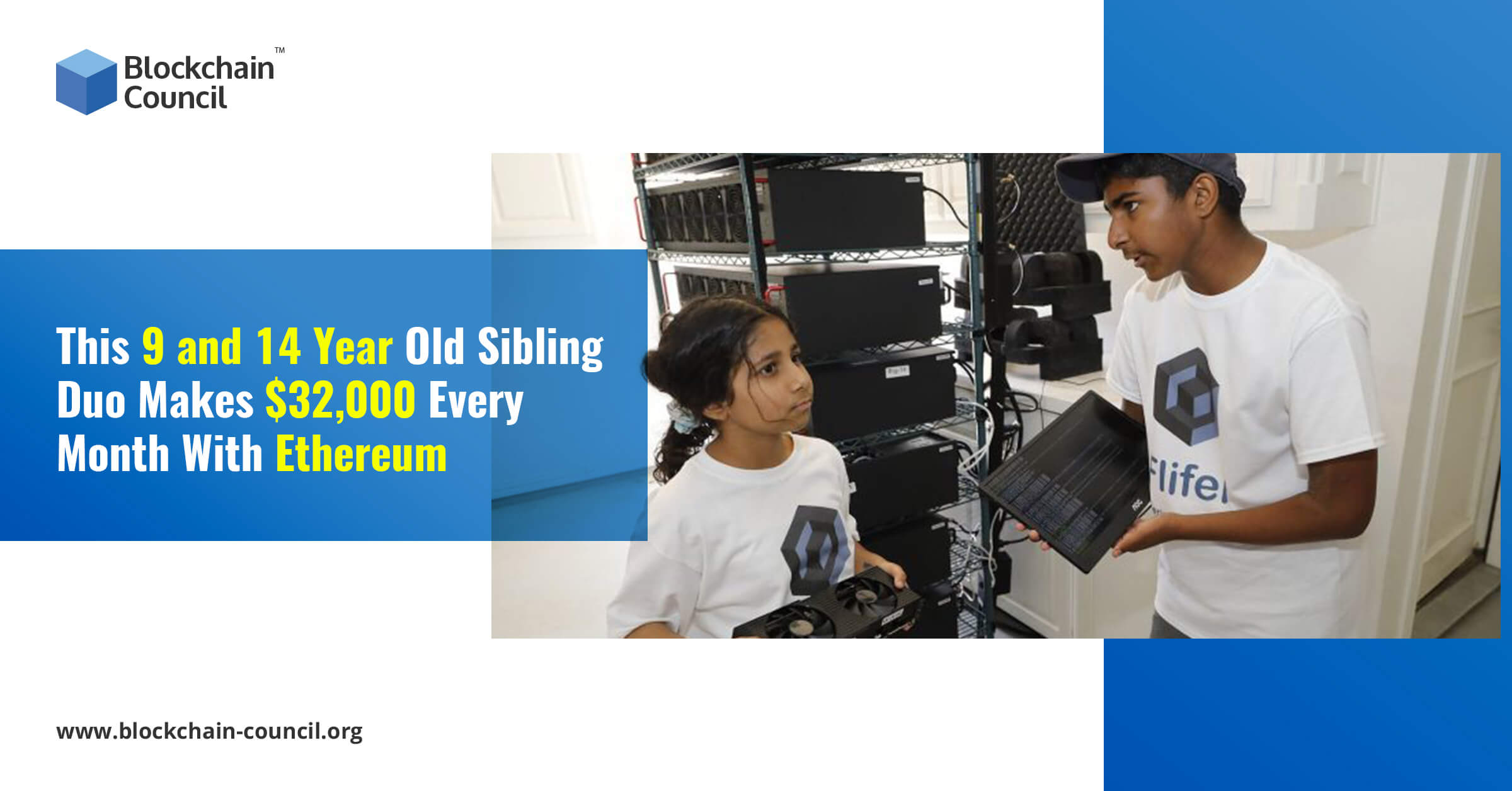
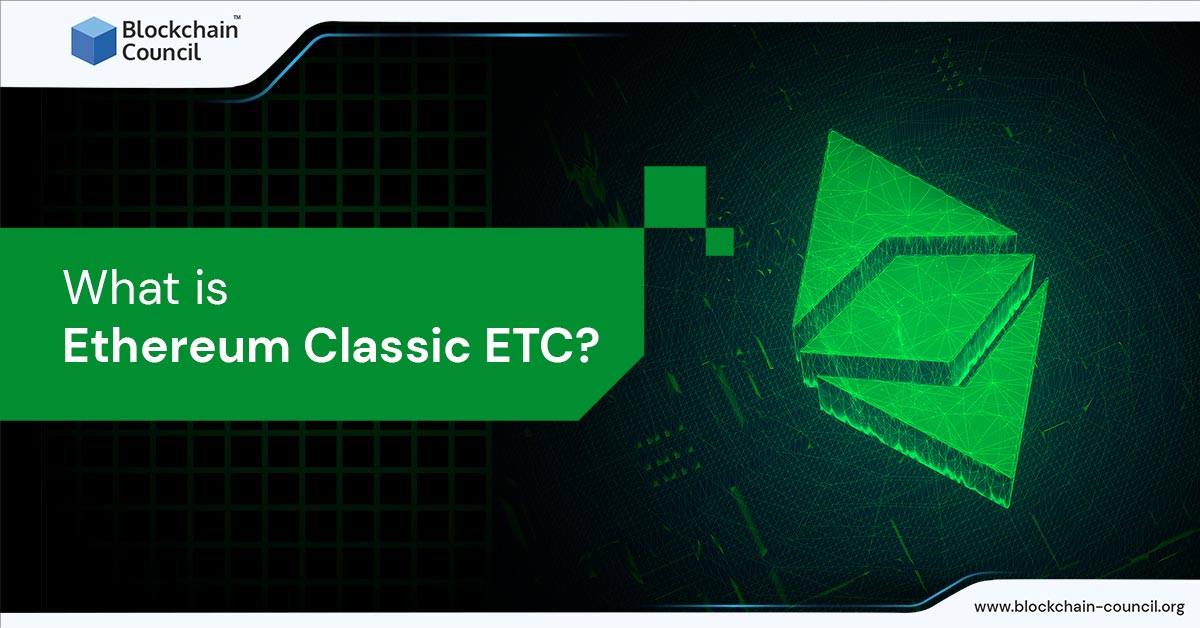
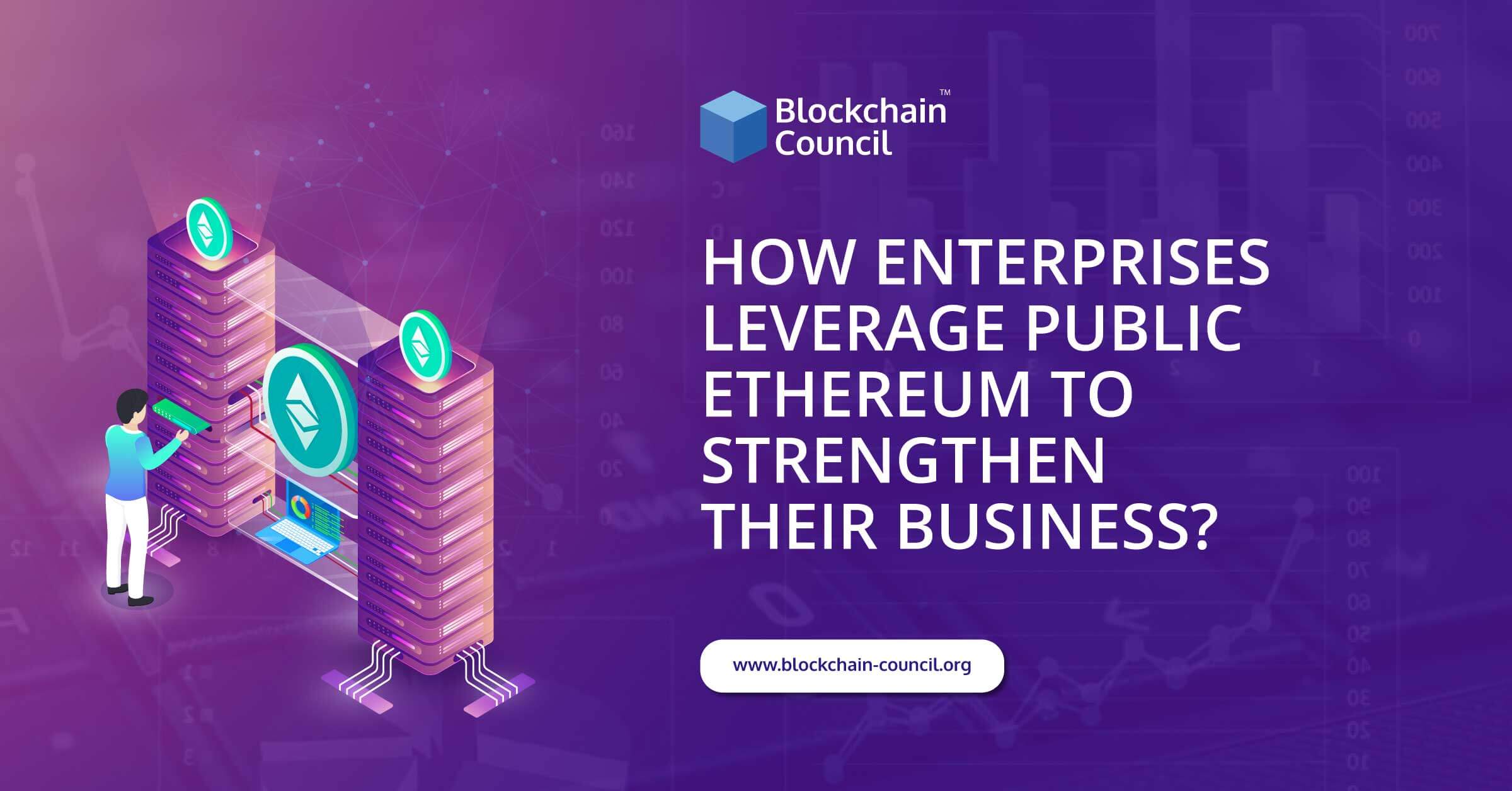
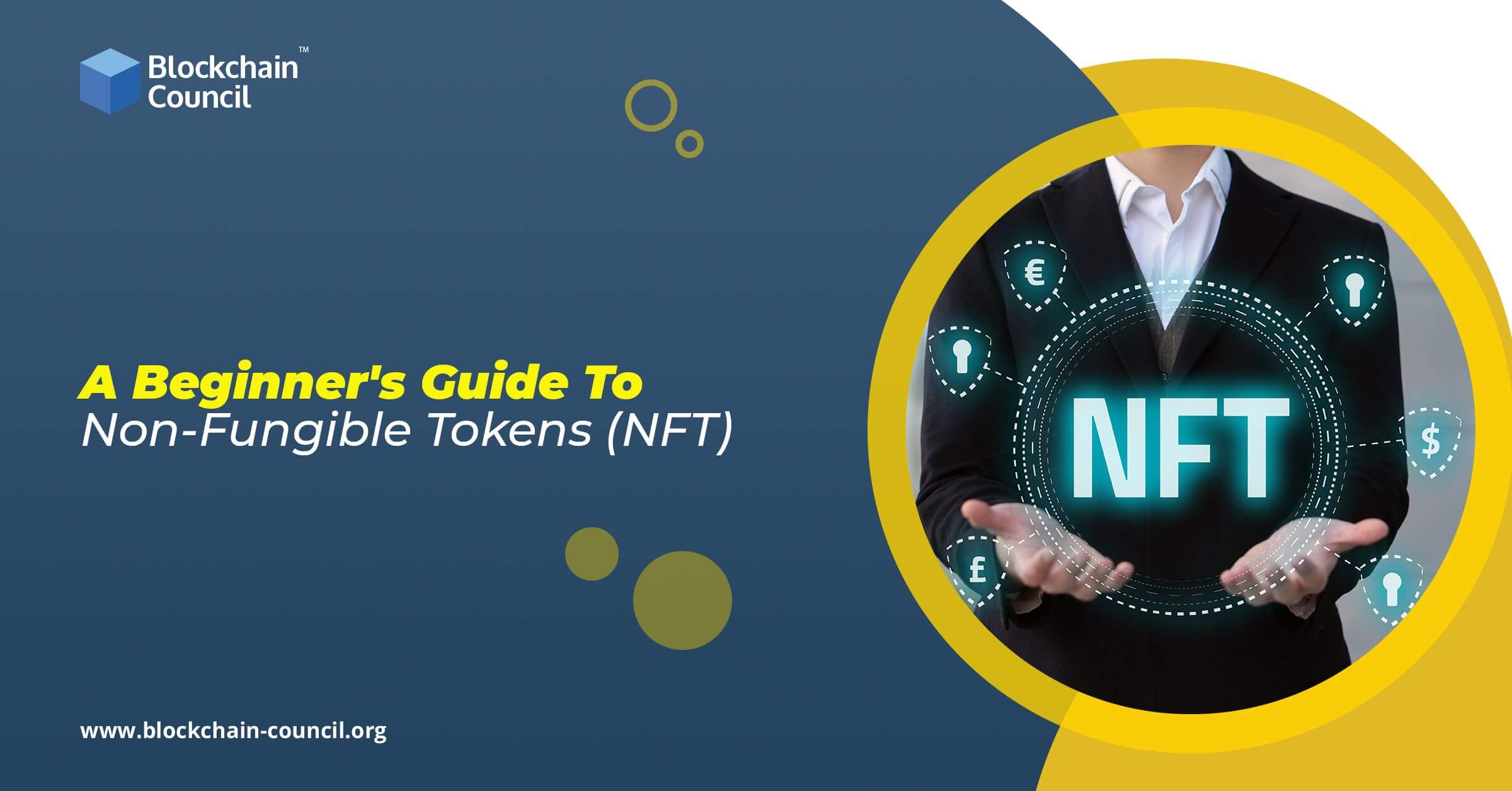
 Guides
Guides News
News Blockchain
Blockchain Cryptocurrency
& Digital Assets
Cryptocurrency
& Digital Assets Web3
Web3 Metaverse & NFTs
Metaverse & NFTs
